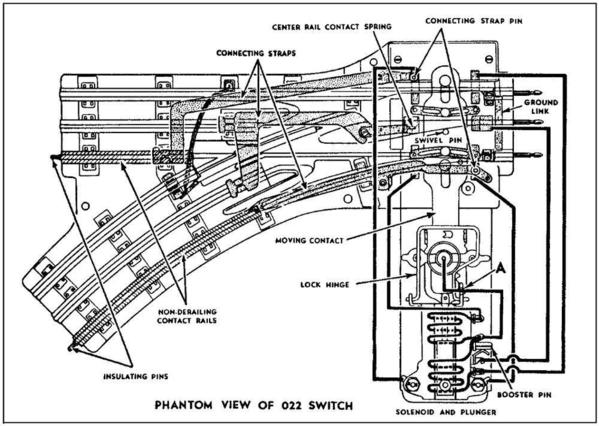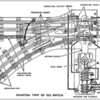@ggg, yep, exactly. I was thinking about this discussion this morning, and constantly when talking about modern trains I get all kinds of discussions about how poorly consumer products are made (which is true), we are in a throw away society and so forth, and while that is true, I think it has fogged things up even more.
We have become a throw away society because the manufacturers made a conscious decision to make products that don't last, the obsession with price became everything. Sure, washers and dryers lasted many years (and on that one, I cannot argue), but a lot of that is because to go for the holy grail of cheap prices, they basically cut corners. They switched from metal gears to plastic ones, they cheapened up on the steel they used, the motors they user to spin the drums on the washing machine and dryers are a lot more cheaply made, usually overseas, and they switched from using belt drive to the geared drives, which basically made fixing the driveline not cost effective. They have added electronics to the units, but spent little money on making them rugged, to last, because it would cost them to do it. If you look at the price of appliances today and adjust them in real dollars, they are a lot cheaper than they were in the day, appliances made 40 years ago + were relatively expensive, so people expected them to last (and because they were simple, could be repaired). I have a modern equivalent of that, I have a speed queen washer that is built like a brick outhouse, and can be serviced pretty easily, it has bronze drive gears, heavy duty motor and when I had to bring it in the house, well, was in for a surprise on how much it weighed....
I have a counter example to the good old days, and that is with cars, and it shows one of the fundamental problems with modern 3 rail units and their reliability. Back in the good old days, the postwar period, cars were pretty much throwaway in a sense, while you could repair them pretty easily with a pair of pliers and screwdriver, they also were not built to last. They rusted out (if you lived in areas with salt used or ocean areas), and their powertrains required a lot of maintainence to keep going, and didn't last, you got to 30,000 miles and that was an engine or transmission that often needed major repairs or replacing. Anyone remember when you changed the spark plugs every 10,000 miles? When mechanics at around 20-30k had to pull the heads to 'decarbonize' the pistons, because there literally would be a pile of black crap on the top of the pistons? Anyone remember trying to cold start an engine? Or when shocks would last 10,000 miles?
You could keep those cars going, of course, and some would last 100,000 miles, but there is no comparison to today, a typical car power plant has a 250k mile duty cycle before needing to be rebuilt, and maintainence has dropped, spark plugs last 100k miles, and you simply don't need to repair them..and despite claims from the cranky class, the electronics in modern cars is pretty **** rugged, even things like O2 sensors don't need replacing (my van has 208k miles on it, and it has never been replaced, for example). There were bumps along the way, the car industry in the 70's when electronics came in, did stupid things, like having the engine management system in the engine compartment, or using crappy components,. and they paid a price, especially when compared to some brands, like Toyota and Honda, that improved their electronics. Yes, cars are expensive, but if you do it in real dollars, then look at how long the car lasts, how little maintainence it requires, in terms of cost it would absolutely blow out the cars from the so called Golden age (think about gas mileage, 6mpg versus 25 for something like a Vette on the highway). Cars, in part because of competition, became more reliable as appliances and other consumer goods became more throwaway and unrepairable.
With modern toy trains, they are more akin to the fancy washing machines and such, they have all manner of sounds and controls and whatnot, but they are not built to be rugged and long lasting, the electronics for example in these units are not made to be rugged, they could be, but they are not, they are made to save on costs. You might think something relatively expensive, like the three rail O gauge stuff we have today, would be made better, but because of the size of the market, they need to make as much profit per unit they can, so they aren't going to invest in longevity. It is kind of like quality on cars before the 1970s,quality simply wasn't a selling point and the car makers made little effort in that regards. If the train manufacturers used the quality control they use on cars and such, rather than the kind they use on mass consumer goods, you wouldn't need to fix or repair them.






